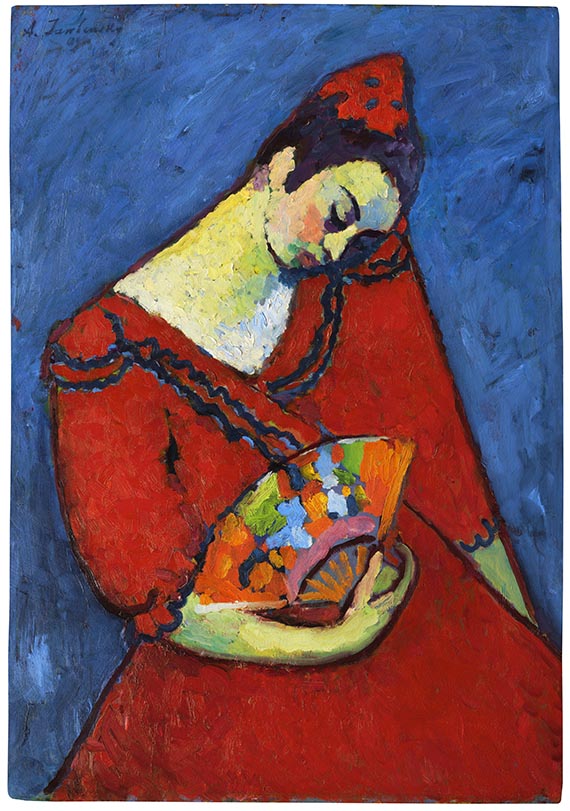Dictionary


Verismo
Verism of the 1920s, literally "true art" (Latin verus = true, real), is often, however not always, regarded as the "left wing" of New Objectivity. The term Verism was first used by Wilhelm Hausenstein in 1920, referring to Heinrich Maria Davringhausen and George Grosz.
Verism emerged as an independent movement at the end of World War I and is characterized by a strong political orientation. In choosing and using its artistic means, the strongly objective Verism is quite similar to New Objectivity, even though it adds another notion, verist artists were quite close to the worker's class and saw their art in a revolutionary-proletarian context.
Accordingly, the subjects of verist painting and graphic art comprised the state the society was in, the horrors of war, demoralization of the big cities, social calamities. Among the typical range of figures were war invalids and cripples, prostitutes, boozers and bums, but also the decadent upper class. These topics are relentlessly depicted in a hard realist style and at times opens out into grotesque, satirical exaggerations.
Among Verism's main representatives are Otto Dix, George Grosz, Rudolf Schlichter, Karl Hubbuch, Karl Rössing, Otto Griebel, Wilhelm Lachnit, Curt Querner, Ernest Neuschul and partly also Max Beckmann.
Verism of the 1920s, literally "true art" (Latin verus = true, real), is often, however not always, regarded as the "left wing" of New Objectivity. The term Verism was first used by Wilhelm Hausenstein in 1920, referring to Heinrich Maria Davringhausen and George Grosz.
Verism emerged as an independent movement at the end of World War I and is characterized by a strong political orientation. In choosing and using its artistic means, the strongly objective Verism is quite similar to New Objectivity, even though it adds another notion, verist artists were quite close to the worker's class and saw their art in a revolutionary-proletarian context.
Accordingly, the subjects of verist painting and graphic art comprised the state the society was in, the horrors of war, demoralization of the big cities, social calamities. Among the typical range of figures were war invalids and cripples, prostitutes, boozers and bums, but also the decadent upper class. These topics are relentlessly depicted in a hard realist style and at times opens out into grotesque, satirical exaggerations.
Among Verism's main representatives are Otto Dix, George Grosz, Rudolf Schlichter, Karl Hubbuch, Karl Rössing, Otto Griebel, Wilhelm Lachnit, Curt Querner, Ernest Neuschul and partly also Max Beckmann.
Offers
Headquarters
Joseph-Wild-Str. 18
81829 Munich
Phone: +49 89 55 244-0
Fax: +49 89 55 244-177
info@kettererkunst.de
Louisa von Saucken / Undine Schleifer
Holstenwall 5
20355 Hamburg
Phone: +49 40 37 49 61-0
Fax: +49 40 37 49 61-66
infohamburg@kettererkunst.de
Dr. Simone Wiechers / Nane Schlage
Fasanenstr. 70
10719 Berlin
Phone: +49 30 88 67 53-63
Fax: +49 30 88 67 56-43
infoberlin@kettererkunst.de
Cordula Lichtenberg
Gertrudenstraße 24-28
50667 Cologne
Phone: +49 221 510 908-15
infokoeln@kettererkunst.de
Hessen
Rhineland-Palatinate
Miriam Heß
Phone: +49 62 21 58 80-038
Fax: +49 62 21 58 80-595
infoheidelberg@kettererkunst.de
We will inform you in time.




